One thing is for sure: Digital storytelling is not complete without expressive and informative voiceovers. They basically make the content more accessible, engaging, and professional. That's why you should always consider adding one to your video projects. Don't worry. Inserting voiceovers doesn't necessarily mean you have to go to a studio and hire a voice actor. No need for that. At present, you can easily generate sound from text using your computer. All you have to do is prepare the script and run it through an AI tool that does such work. In a minute or two, the output will be ready for use. Amazing, right?
In this article, we will discuss the powerful benefits of using a sound generator from text. We will also recommend some AI tools that can help you generate sound from text in a snap. Lastly, we will provide some unknown techniques you can try to upgrade the quality of your outputs. Continue reading below to learn more.
What is a Sound Generator From Text?
True to its name, a sound generator from text is a special tool that transforms text into speech. It generally analyzes different types of written documents and produces high-quality spoken audio from them. Yes. That is right. A sound generator from text is capable of recreating various human speech elements, including intonation, rhythm, and vocal emphasis. Therefore, content creators resort to this option when they are in need of realistic voiceovers for their materials. Oftentimes, they are employed in the creation of podcast episodes, vlog entries, and many more.
Currently, the application of this technology has evolved a lot. Aside from content creation, the sound generator from text is now also being used in other industries. For instance, businesses are now integrating this tool into their IVR systems as automated customer support. These tools commonly handle the initial interaction when a customer reaches out for assistance. Other than that, companies also use the sound generator from text to create sudden announcements, memos, and the like.

Indeed, we cannot deny that it's now very easy to generate sound from text. All it takes is just a click or two right from your devices. That said, you should take it to your advantage. Whether you're an internet content creator or a professional marketer, find a way to integrate this powerful tool into your usual workflow.
Must-Have Features When Choosing a Sound Generator From Text
You will not run out of choices when you look for a sound generator from text. There are lots of them out there that you can access on desktop, mobile, or the web. However, keep in mind that they are not equally created. Each tool offers a different array of text-to-sound generation features. That said, make sure that you evaluate your options very well before making the final choice. To help you, check out the list of must-have features below. Look for them the next time you're in need of a sound generator from text.
- Natural-sounding AI voices: It provides a large selection of AI voice styles that sound realistic, natural, and engaging. Make sure that they can mimic certain human tones and emotions.
- Multiple languages and accent support: It is capable of reading and processing text written in different languages. At the same time, it offers various accents for voices if necessary.
- Seamless export process: It allows you to export the output without too many unnecessary disruptions. On top of that, you're given the option to download the file as MP3, WAV, and other similar formats.
- Cross-platform compatibility: It runs on different devices. Whether it's on mobile or desktop, the performance and level of efficiency remain the same from one device to another.
The Best Tools to Generate Sound From Text
Do you now want to try the sound generator from text on your end? That's great. As mentioned earlier, there are lots of tools to choose from. That's why you should select the perfect one that suits your needs and preferences. To get started, check out the list written below and evaluate each item very well.
For Mobile
For on-the-go content creators and hustling professionals, being able to generate sound from text on smartphones is a blessing. If you need one as well, don't hesitate to try Wondershare Filmora - Mobile version. This powerful video editing software has a mobile application that can handle different content-creation procedures. Of course. Generating sound from text is included in the package. Therefore, you should give it a shot whenever you need to produce instant spoken audio from your script. One way or another, Wondershare Filmora can really be of great help.
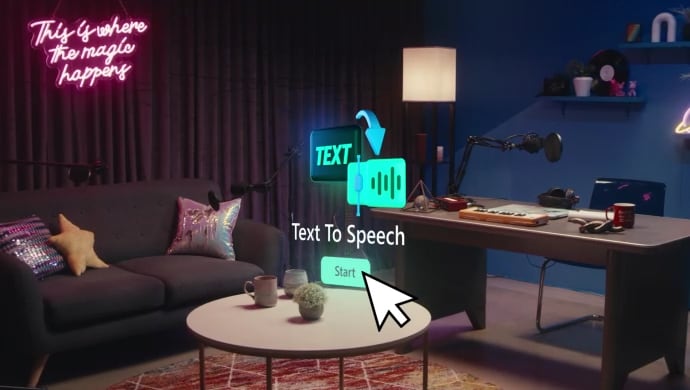
Why Choose Wondershare Filmora?
Wondershare Filmora is packed with highly advanced features that can help you generate sound from text. You just have to familiarize yourself with them in order to make the most of the benefits they have to offer. To kick things off, check out the list below and keep it in mind.
- Studio-grade AI voices: It delivers high-quality speech that enhances user experience and engagement.
- Video editor integration: It is integrated into the video editing workspace of Wondershare Filmora. That means you can directly insert the generated output into your video project and render it for YouTube, TikTok, etc.
- One-click export to social media platforms: Aside from exporting the output to your local device storage, you can also post it directly to social media. All it takes is just a click or two.
- Ease of use: It has a very intuitive and responsive interface that simplifies the intricate process of sound generation from text. Whether you're a beginner or not, you'll find it easy to use and navigate.
Step-By-Step Guide
As mentioned earlier, Wondershare Filmora is not that hard to use. If you need to generate sound from text, you can surely do it in just a snap. Do you want to give it a shot? If that is so, then check out the guide provided below.
01of 06Step 1: Launch Wondershare Filmora
Run the Wondershare Filmora application on your mobile device and select Text-To-Speech. If you cannot find it from the choices, click the More Options button instead to view the entire collection of tools.
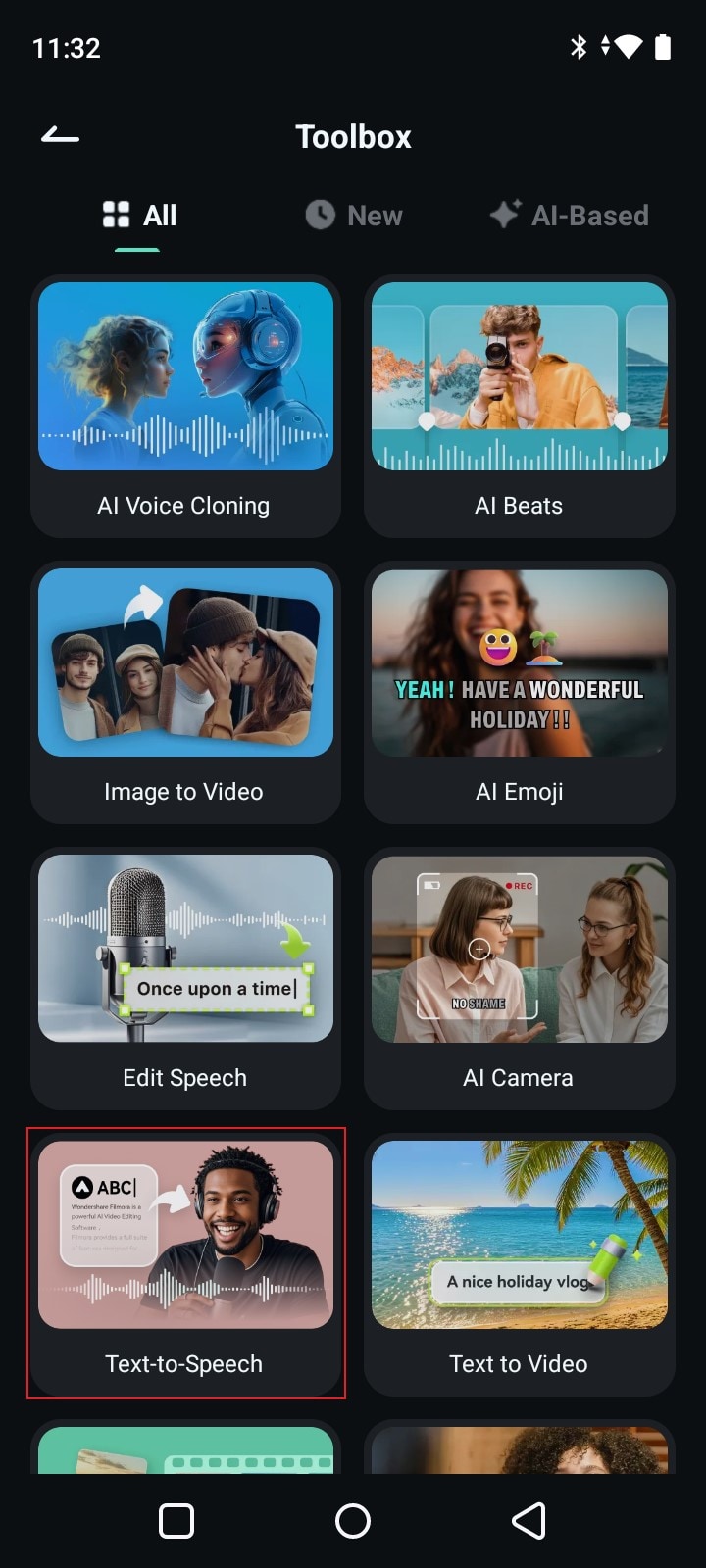
02of 06Step 2: Select Media Files
You will be redirected to a new panel where you can access your local files. From there, browse the given selections and choose the media you want to import.
03of 06Step 3: Edit Text Content
After that, it's time to generate sound from text. To get started, tap the default title asset in the frame and type the actual script you want to convert into speech.
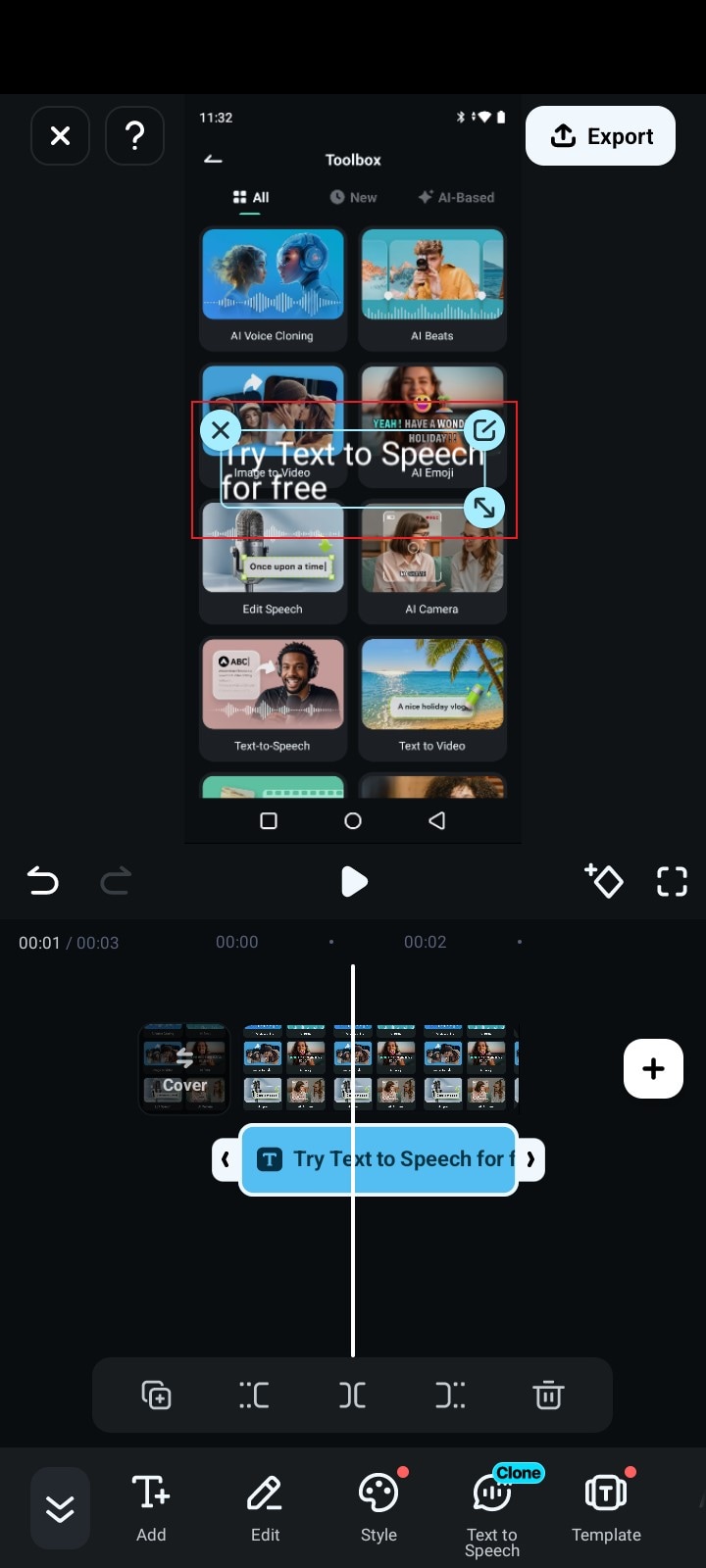
04of 06Step 4: Generate Voiceover
Subsequently, navigate to the bottom menu and click Text To Speech. Choose the AI voice you want to apply or clone your own voice. Once done, click Create to proceed.
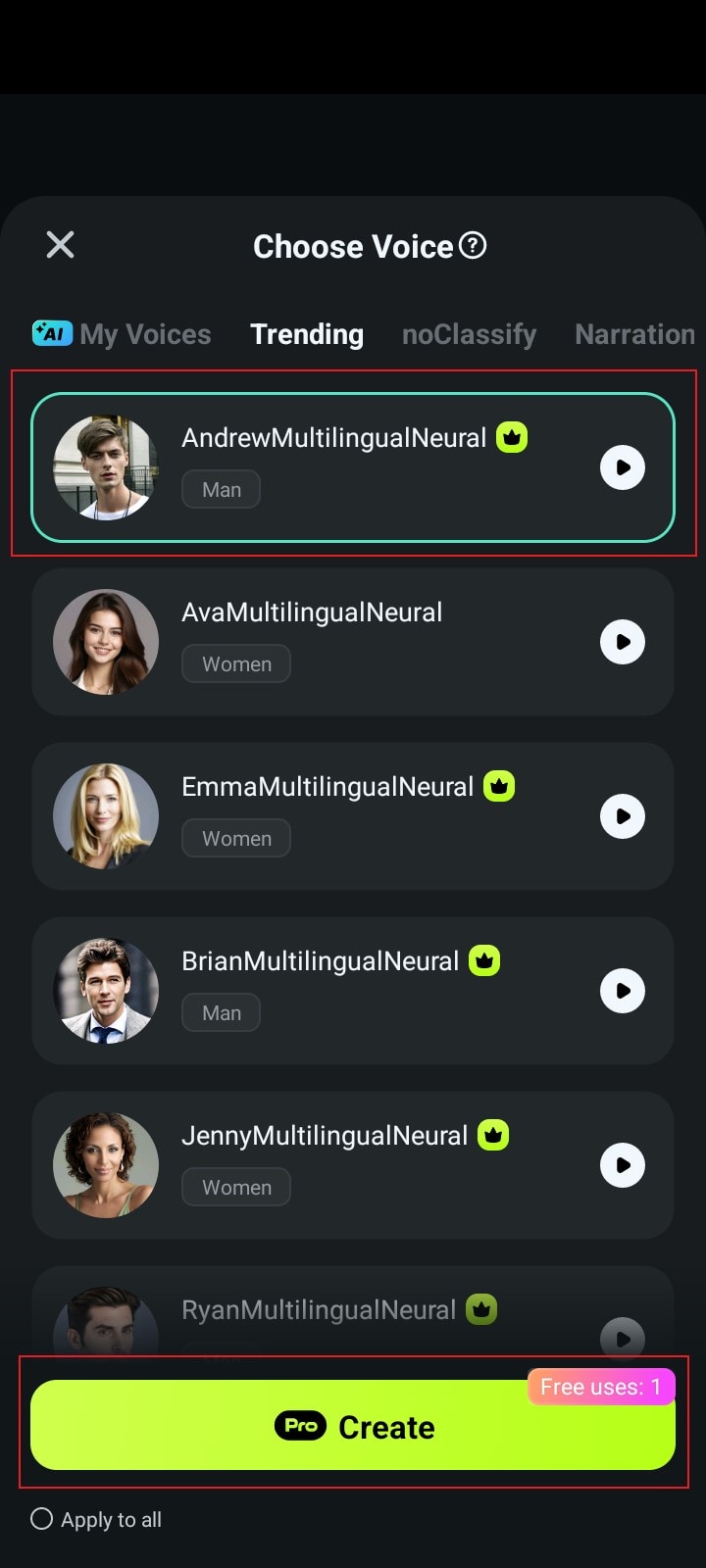
05of 06Step 5: Customize Audio
In a minute or two, the spoken audio will be generated from the provided text input. Customize the audio file according to your liking. For instance, you can fix its timing, add effects, enhance its quality, and the like. Simply use the options available within the workspace to make your desired changes.
06of 06Step 6: Export Output
Finally, export the output as a standalone audio file or insert it into your video project for further editing.
For Desktop
The sound generator from text that runs on mobile devices is truly helpful. It offers convenience and accessibility to users on the move. However, we cannot deny that some projects are just too complicated to handle. If that is the case, then it's best to opt for desktop-compatible alternatives. Don't worry. There are lots of them to choose from. Check out the list below to get started.
Wondershare Filmora
Wondershare Filmora is compatible with mobile, desktop, and the web. If the mobile version is not enough to cater to your complex project, then move to the desktop app instead. It offers more useful tools that can help you generate sound from text more easily. Do you want to know what those are? If so, check out the list below.
- AI copywriting: If you haven't written a script yet, it has an AI Copywriting feature that allows you to generate one instantly. Just prepare a well-detailed script text prompt that describes the topic you want to cover.
- Automatic sentence segmentation: It gives you the option to trim the sentences automatically and fit them well in the frame.
- Wide language selection: It is capable of reading and processing over 33 different languages worldwide. Among them are English, French, Spanish, Russian, German, and more.
Balabolka
Are you currently using Windows desktop to generate sound from text? If that is the case, then you can try Balabolka on your end. This Windows-based tool is equipped with basic yet useful tools that you can take into consideration in this regard. To familiarize yourself with them, the list is provided below for your reference.
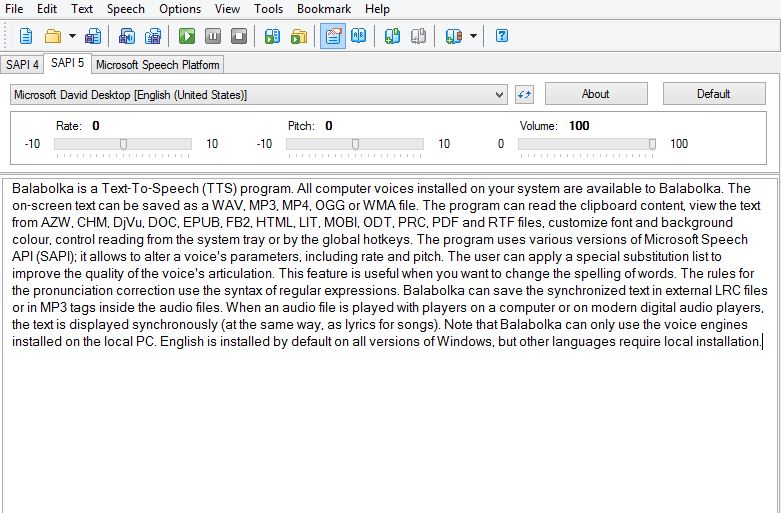
- Editable voice settings: It enables you to set the pitch, speed, and volume level based on your preference.
- Different accepted formats for input: Aside from pasting the text content, you can also run it using TXT, DOCX, EPUB, PDF, and HTML files.
- Bulk conversion: For convenience and efficiency, it allows you to convert multiple scripts at once.
For Online Use
In the same way, you can also generate sound from text online. The procedure is almost the same, except that the platform doesn't require you to install the app. If you wish to give it a shot, you will not run out of choices. There are tons of them scattered all over the internet. You just need to select the best one that matches your needs. To give you some ideas, go over the list written below.
NaturalReader
First on the list is NaturalReader. As mentioned earlier, it is a sound generator from text that you can access and run over the internet. Aside from accessibility, NaturalReader is also user-friendly, responsive, and intuitive. You will not have a hard time transforming any form of text input into actual spoken audio. Just run the tool and go ahead. It's just as simple as that. To familiarize yourself more, check out the list of its key features below.
- MP3 file export: You can export the generated voiceovers to your local storage in MP3 format.
- OCR support: You can import text input from external files like images, PDFs, and other scanned documents.
- Pronunciation settings: It allows you to edit the pronunciation and pacing according to your liking.
Murf.ai
Last but not least is Murf.ai. Users opt for this tool to access a large library of more than 200 voices with 20 available languages. It's indeed a great advantage, especially if you're creating different types of content from time to time. But aside from that, there are other useful features that you can access from this tool. To learn more about them, go over the list below and read the description of each item.

- Voice style customization: Aside from its huge voice style collection, you can also make certain adjustments as needed. For instance, you can change the pitch, speed, tone, and other similar configurations to imply a message or emotion.
- Flexible integration options: You are allowed to integrate this tool with several external programs. Among them are Google Slides, Canva, Adobe Audition, and more.
- Text translation: Before you generate sound from text, you can translate the input first if necessary. Murf.ai has a built-in you can use in this regard.
How to Generate Sound From Text Like a Pro?
There is no denying that the tools listed above are all really helpful if you need to generate sound from text. Let's take Wondershare Filmora as an example. Its cross-platform compatibility and wide range of tools empower on-the-go content creators to work smarter and quicker. However, keep in mind that you can always take your output to another level. Lots of ways are there to help you optimize it even further. To help you out, below are some tips you can take into consideration. Read through these techniques and try to apply them the next time you generate sound from text.
General Tips
Here are some basic tips you can take into consideration as you prepare your text input for sound generation.
- Don't forget to add punctuation marks properly. It will help the AI produce the corresponding sound with enhanced speech flow and intelligibility.
- If necessary, check the speed of the generated audio and make adjustments if necessary. Make sure that it goes well with the actual pacing of the visual content.
- Don't come up with the final choice without exploring all the available options. If possible, generate one or two voiceovers using different voice styles to better see the perfect fit for your needs.

Use Cases
You can fully optimized the benefits of the sound generator from text by using this tool for its intended purpose. That's why you should know the basic use cases of these AI features. To familiarize yourself pretty well, read through the list below and keep it in mind.
- YouTube narrations: Improve the storytelling elements of your video content by generating sound from text and adding it to your project.
- Audiobooks and other e-learning materials: Many people learn a concept more easily through audiobooks and other similar materials. You can convert the textual content of a book into spoken audio if you want to create this more interactive version.
- Social media voiceovers: It can help you make a simple social media caption more engaging by generating a corresponding voiceover. Use this tool to elevate the quality of your social media posts and reach a wider group of audience.
Conclusion
Sure. A sound generator from text is not for everyday use. You can continue with your usual routine even without putting this tool into action. However, we cannot deny that the sound generator from text is here for a reason. It can be very useful under certain circumstances. That's why you should not brush off the idea of exploring it on your end. As a content creator who's always away from the desk, ensure that you have this tool installed on your mobile device. Download Wondershare Filmora today. Apart from the powerful video editing workspace, you can also access its built-in text-to-speech generator and initiate the conversion whenever needed. All it takes is just a few clicks to run the app. By making such a small effort, you can certainly make a huge difference in your usual content-creation workflow.



 100% Security Verified | No Subscription Required | No Malware
100% Security Verified | No Subscription Required | No Malware


